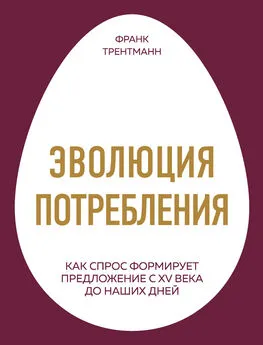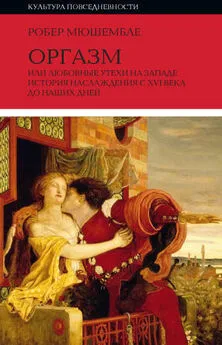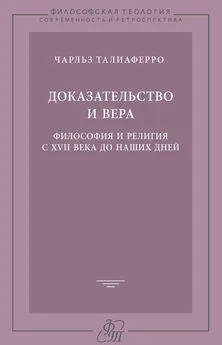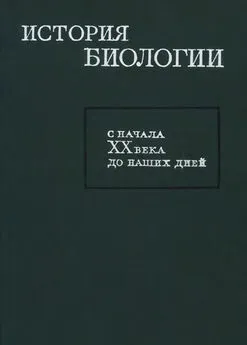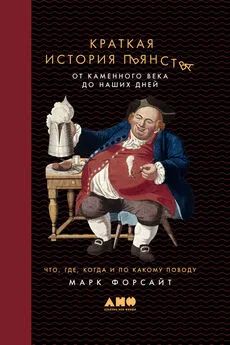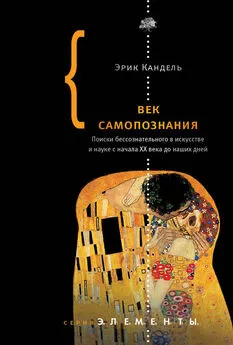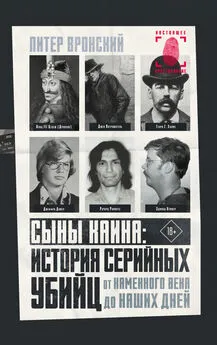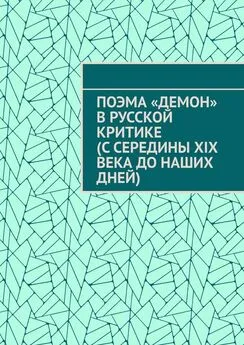Франк Трентманн - Эволюция потребления. Как спрос формирует предложение с XV века до наших дней
- Название:Эволюция потребления. Как спрос формирует предложение с XV века до наших дней
- Автор:
- Жанр:
- Издательство:Литагент 5 редакция «БОМБОРА»
- Год:2019
- Город:Москва
- ISBN:978-5-04-088674-6
- Рейтинг:
- Избранное:Добавить в избранное
-
Отзывы:
-
Ваша оценка:
Франк Трентманн - Эволюция потребления. Как спрос формирует предложение с XV века до наших дней краткое содержание
Эволюция потребления. Как спрос формирует предложение с XV века до наших дней - читать онлайн бесплатно ознакомительный отрывок
Интервал:
Закладка:
Lizabeth Cohen, A Consumers’ Republic: The Politics of Mass Consumption in Postwar America (New York, 2003). Для сравнения: David Steigerwald, «All Hail the Republic of Choice: Consumer History as Contemporary Thought», Journal of American History 93, no. 2, 2006: 385–403.
10
Tony Blair, Guardian , 24 June 2004, 1. См. также: Tony Blair, The Courage of Our Convictions: Why Reform of the Public Services is the Route to Social Justice (London, 2002). Указание на высказывание социал-демократов: C. A. R. Crosland, The Future of Socialism (London, 1956).
11
Две главные работы: Mary Douglas & Baron Isherwood, The World of Goods: Towards an Anthropology of Consumption (London, 1996, 2nd edn); и Daniel Miller, The Comfort of Things (Cambridge, 2008). См. также: Michel de Certeau, The Practice of Everyday Life (Berkeley, CA, 1974/1984). Другие научные мнения: Daniel Miller, ed., Acknowledging Consumption: A Review of New Studies (London, 1995); Martyn J. Lee, The Consumer Society Reader (Malden, MA, 1999); Juliet B. Schor & Douglas B. Holt, eds., The Consumer Society Reader (New York, 2000).
12
Daniel Kahneman & Amos Tversky, eds., Choices, Values, and Frames (Cambridge, 2000).
13
John Kenneth Galbraith, The Affluent Society (New York, 1958), 203.
14
The Works of Aurelius Augustine, Vol. II: The City of God (Edinburgh, 1871),518.
15
«History and Literature», в сборнике: T. Roosevelt, History as Literature and Other Essays (New York, 1913), 27. Другие подходы см.: F. Trentmann, «The Politics of Everyday Life»: в The Oxford Handbook of the History of Con-sumption , Frank Trentmann, ed. (Oxford, 2012), 521—47.
16
Fernand Braudel, The Structures of Everyday Life (New York, 1979/1981), 23, 28.
17
Neil McKendrick, John Brewer & J. H. Plumb, The Birth of a Consumer Society: The Commercialization of Eighteenth-century England (Bloomington, IN, 1982).
18
Victoria de Grazia, Irresistible Empire: America’s Advance Through Twentieth-century Europe (Cambridge, MA, 2005).
19
OECD, Social Expenditure Update, November 2014, http://www.oecd.org/els/soc/OECD2014-Social-Expenditure-Update-Nov2014—8pages.pdf.
20
См. также Robert H. Frank, Luxury Fever: Money and Happiness in an Era of Excess (Princeton, NJ, 1999) и в особенности рассуждения на страницах 434—9.
21
Читателям, заинтересовавшимся этим спором, стоит обратиться к: Angus Deaton, Understanding Consumption (Oxford, 1992); Herbert A. Simon, Models of Bounded Rationality (Cambridge, MA, 1982); и D. Southerton A. Ulph, eds., Sustainable Consumption (Oxford, 2014).
22
Thorstein Veblen, The Theory of the Leisure Class: An Economic Study of Institutions (New York, 1899/1953).
23
Чтобы узнать больше об этой новой области исследования, см., например: Jukka Gronow Alan Warde, eds., Ordinary Consumption (London, 2001); A. Warde D. Southerton, eds., The Habits of Consumption (Helsinki, 2012); Elizabeth Shove, Mika Pantzar & Matthew Watson, The Dynamics of Social Practice: Everyday Life and How It Changes (London, 2012).
24
W. G. Runciman, Relative Deprivation and Social Justice: A Study of Attitudes to Social Inequality in Twentieth-century England (London, 1966).
25
В Соединенном Королевстве в 2013 году на дома напрямую приходилось 17 % (77 мегатонн) всех выбросов CO 2, что больше, чем от всего бизнес-сектора (16 %); бо́льшая часть – от отопления пространства и воды. «Напрямую», потому что государственная статистика рассматривает выбросы CO 2отдельно от сектора, поставляющего энергоресурсы (38 %); см. Department of Energy and Climate Change, 2013 UK Greenhouse Gas Emissions, etc., at: https:// www.gov.uk/government/uploads/system/uploads/attachment_data/file/295968/20140327_2013_UK_Greenhouse_Gas_Emissions_Provisional_Figures.pdf.
26
Тридцать пять экспертов высказывают свое мнение по разным регионам, периодам и темам: Oxford Handbook of the History of Consumption , ed. Trentmann.
27
Два коротких исключения при сравнительном анализе европейских стран: Heinz Gerhard Haupt, Konsum und Handel: Europa im 19. und 20. Jahrhundert (Göttingen, 2002); Marie-Emmanuelle Chessel, Histoire de la consommation (Paris, 2012).
28
Antonia Finnane, «Yangzhou’s «Mondernity»: Fashion and Consumption in the Early Nineteenth Century», Positions: East Asia Cultures Critique 11, no. 2, 2003: 395–425. Я благодарен Антонии Финнане за дискуссию. Мы также могли бы начать с рассказа об изобилии магазинов, моды и новинок в Японии конца XVII века: Ihara Saikaku, The Japanese Family Storehouse, or the Millionaires’ Gospel Modern-ized , trans. G. W. Sargent (Cambridge, 1688/1959).
29
Neil McKendrick et al, The Birth of a Consumer Society ; Бродель назвал главу о недостатке моды в Китае «Когда общество стоит на месте» в: Civilization and Capitalism, 15th‐18th Century, I, 312.
30
Joan Thirsk, Economic Policy and Projects: The Development of a Consumer Society in Early Modern England (Oxford, 1978); Chandra Mukerji, From Graven Images: Patterns of Modern Material-ism (New York, 1983); John Goldthwaite, «The Empire of Things: Consumer Demand in Renaissance Italy», из: Patronage, Art and Society in Renaissance Italy , eds. Francis Kent & Patricia Simons (Oxford, 1987); Lisa Jardine, Worldly Goods: A New History of the Renaissance (London, 1997); Craig Clunas, Superfluous Things: Material Culture and Social Status in Early Modern China (Chicago, 1991); Christopher Dyer, An Age of Transition? Economy and Society in England in the Later Middle Ages (Oxford, 2005); а также Maryanne Kowaleski, «The Consumer Economy», из: Rosemary Horrox & W. M. Ormrod, A Social History of England, 1200–1500 (Cambridge, 2006), 238—59.
31
Ruth Barnes, Indian Block-printed Textiles in Egypt: The Newberry Collection in the Ashmolean Museum (Oxford, 1997).
32
В первой половине XVII века китайский сахар (сахарная пудра и кандированный сахар) всё чаще отправлялся в Европу, так как из-за конфликта между нидерландцами и португальцами возникли проблемы с поставками из Бразилии; в 1637 году свыше 4 миллионов фунтов китайского сахара было доставлено в Европу. Поставки в Амстердам прекратились в 1660-х, когда связь с Бразилией восстановилась, однако они продолжились в Персию и Японию. См. Sucheta Mazumdar, Sugar and Society in China: Peasants, Technology, and the World Market (Cambridge, MA, 1998), 83—7.
33
1,3 % в год в XVI веке, 0,7 % в XVII веке и 1,3 % в XVIII веке, по данным: K. H. O’Rourke & J. G. Williamson, «After Columbus: Explaining the Global Trade Boom: 1500–1800», Journal of Economic History 62, 2002: 417—56. Для деталей см.: Ronald Findlay & Kevin H. O’Rourke, Power and Plenty: Trade, War and the World Economy in the Second Millenium (Princeton, NJ, 2007), главы 4–5.
34
Angus Maddison, The World Economy: Historical Statistics (Paris, 2003), 260—3.
35
John E. Wills, «Maritime China from Wang Chih to Shih Lang: Themes in Peripheral History», в: From Ming to Ch’ing: Conquest, Reign and Continuity in Seventeenth-century China , eds. Jonathan Spence & John Wills (New Haven, CT, 1979), 201—28.
36
Antonio de Morga, Sucesos de las Islas Filipinas (1609) [ History of the Philippine Islands] , цитата со с. 405—8, available at: http://www. gutenberg.org/dirs/etext04/8phip10.txt.
37
William Atwell, «Ming China and the Emerging World Economy» в: Denis Twitchett & Frederick W. Mote, eds., Cambridge History of China, Vol 8: The Ming Dynasty, 1368—44, Part 2 (Cambridge, 1998), 388—92.
38
W. L. Idema, «Cannon, Clocks and Clever Monkeys», в: Development and Decline of Fukien Province in the 17th and 18th Centuries , ed. Eduard B. Vermeer (Leiden, 1990).
39
Jan De Vries & M. van der Woude, The First Modern Economy: Success, Failure and Perse-verance of the Dutch Economy, 1500–1815 (Cambridge, 1997), 437, таблица 10.4; F. S. Gaastra & J. R. Bruijn, «The Dutch East India Company», из: J. R. Bruijn & F. S. Gaastra, Ships, Sailors and Spices: East India Companies and Their Shipping in the 16th, 17th and 18th Centuries (Amsterdam, 1993), таблица 7.2, 182.
40
De Vries & Woude, First Modern Economy , 457—8.
41
Ralph Davis, English Overseas Trade, 1500–1700 (London, 1973).
42
Richard Ligon, A True & Exact History of the Island of Barbados (London, 1657), 40.
43
Phyllis Deane & William Alan Cole, British Economic Growth, 1688–1959 (Cambridge, 1962), 87; а также Ralph Davis, «English Foreign Trade, 1700—74», Economic History Review (2nd series) XV, 1962: 285–303.
44
Чтобы понять важность этого «чудо-продукта», см.: Sucheta Mazumdar, «China and the Global Atlantic: Sugar from the Age of Columbus to Pepsi—Coke and Ethanol», Food and Food-ways 16, no. 2, 2008: 135—47.
45
См. Richard Goldthwaite, The Economy of Renaissance Florence (Baltimore, MD, 2009); Robert S. DuPlessis, Transitions to Capitalism in Early Modern Europe (Cambridge, 1997); Harry A. Mis-kimin, The Economy of Later Renaissance Europe, 1460–1600 (Cambridge, 1977).
Читать дальшеИнтервал:
Закладка:
